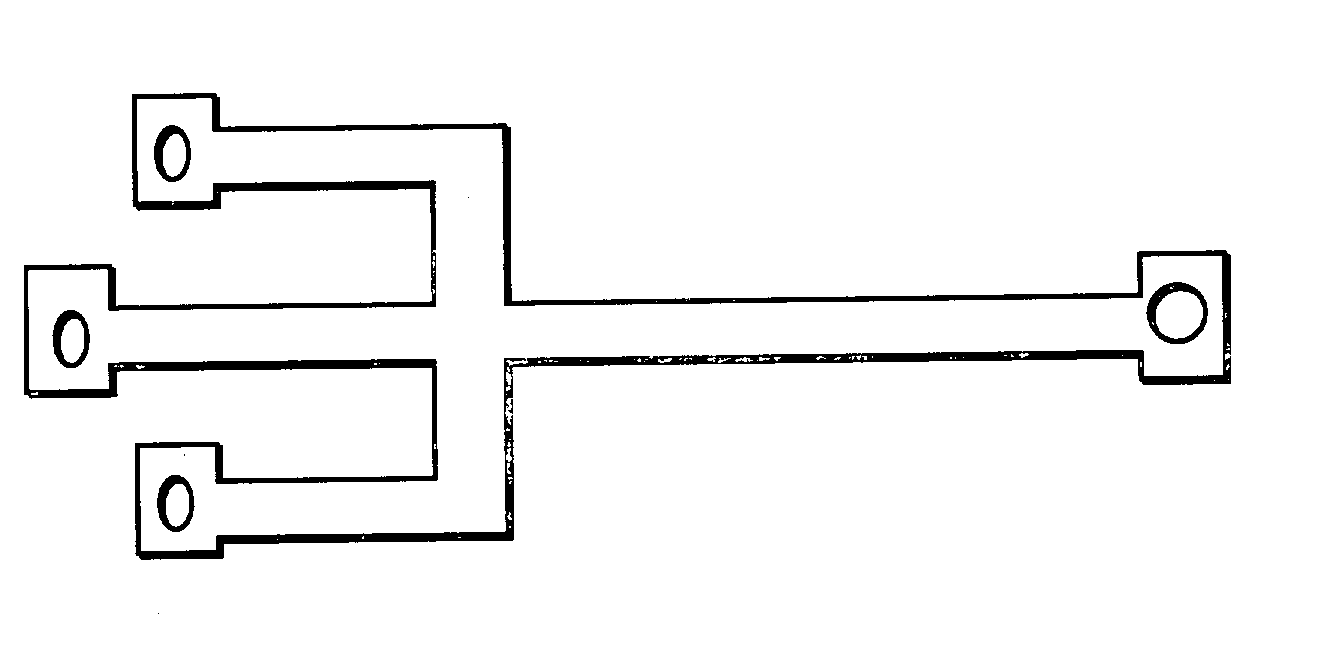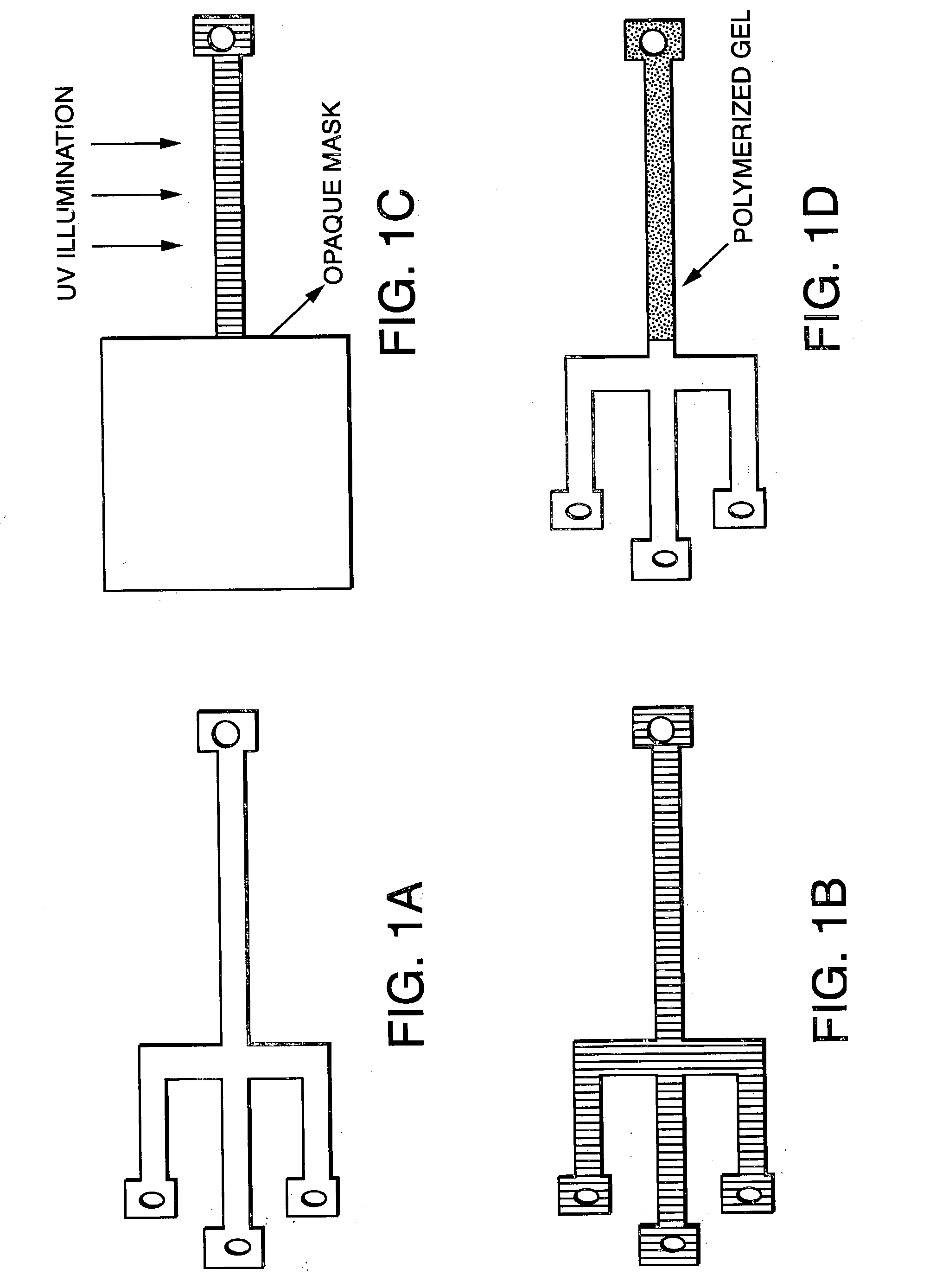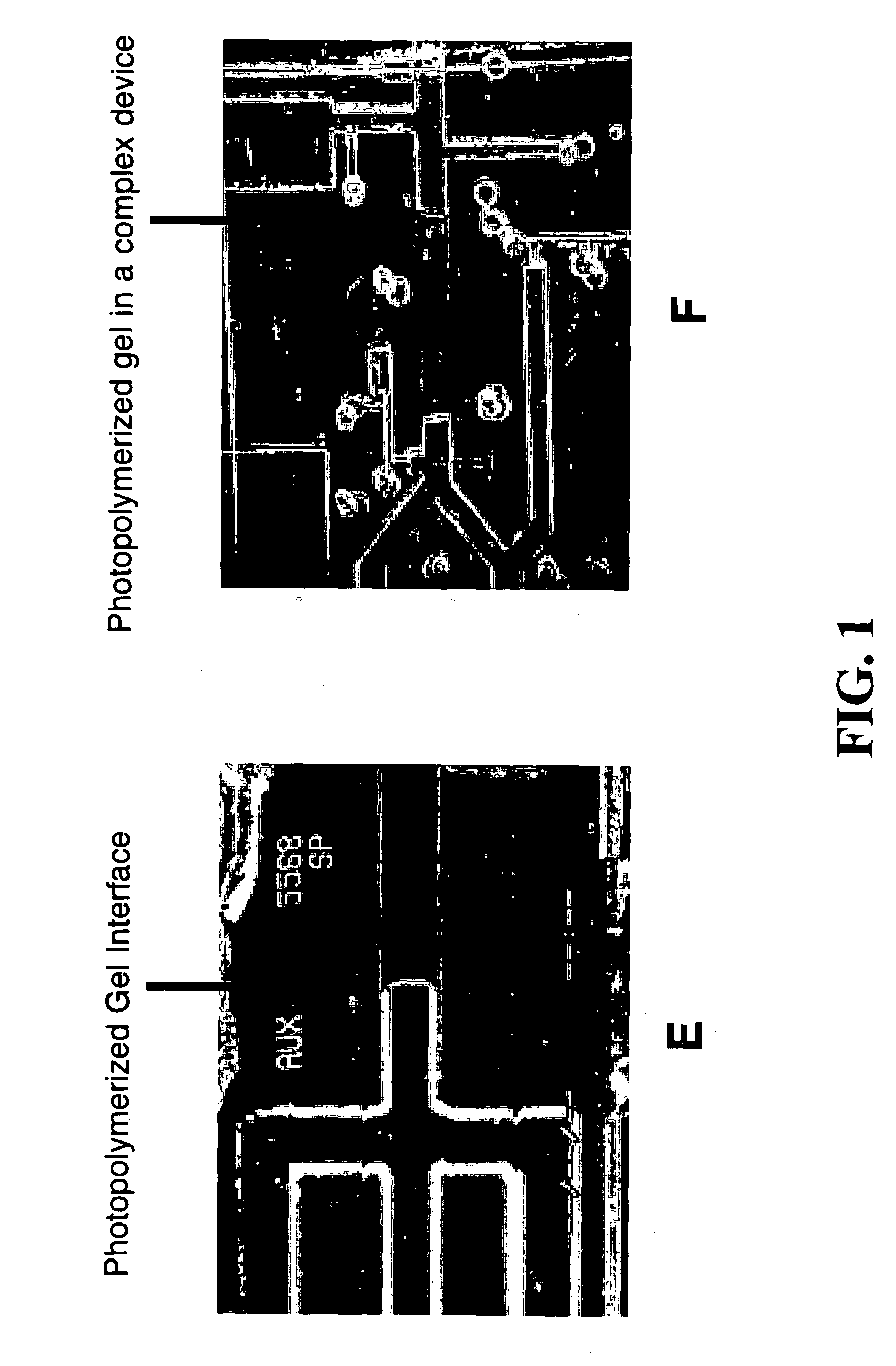Electrophoresis in microfabricated devices using photopolymerized polyacrylamide gels and electrode-defined sample injection
- Summary
- Abstract
- Description
- Claims
- Application Information
AI Technical Summary
Benefits of technology
Problems solved by technology
Method used
Image
Examples
example 1
Electrophoresis Procedure
[0090] Prior to electrophoresis runs, the microchannels (prepared as described above) were rinsed with acetone, isopropanol (IPA) and distilled / deionized water to remove particulate and organic matter. Following this clean, the channels were treated with RainX AntiFog solution (Blue Coral, Cleveland, Ohio) to promote uniform wetting on all channel surfaces by the gel reagents. Photopolymerizable polyacrylamide gels were prepared by using the commercial ReproGel.TM. (Amersham Pharmacia, Kalamazoo, Mich.) system (see, U.S. Pat. No. 5,873,991 to Gothe, incorporated herein by reference). The gel solution was prepared by mixing 10 .mu.l of solution A (acrylamide stock solution) with 20 .mu.l of solution B and was loaded into the entire channel network by placing a drop of premixed solution at one end of the separation channel. The device was masked in all sections except where polymerization was desired and exposed to a UVA illumination from a 40 watt mercury vap...
example 2
Photopolymerized Polyacrylamide Gels
[0092] Having selected the commercially available UV initiated ReproGel.TM. formulation, the gel casting process was greatly simplified. Two variations of the polymerization mixture were studied: ReproGel.TM. High Resolution, containing 8% (w / v) acrylamide / bisacrylamide monomers and 1.times. TBE buffer, and ReproGel.TM. Long Read, containing 7% (w / v) acrylamide / bisacrylamide monomers and 1.5.times. TBE buffer. The characteristically small dimensions of microfabricated separation channels demand that care be taken to preserve the integrity of the gel during the casting process by avoiding the introduction of impurities and eliminating bubble formation during the polymerization reaction. However, we found that reproducible high-resolution separations were achievable using the as-received reagents, without the need for additional purification and / or degassing.
[0093] Flat and uniform gel interfaces in the sample loading region could be achieved by par...
example 3
Optimization Of Photopolymerization Time
[0095] Optimization of the polymerization protocol focused on adjusting UV intensity and polymerization time, both of which strongly affect the rate of initiation, with the aim of maximizing separation performance with minimal run-to-run variability. The Reproset.TM. UV illumination source (Amersham Pharmacia, Kalamazoo, Mich.), designed specifically for use with the ReproGel.TM. reagents, provided more consistent results than a lower-intensity UV lamp (UVP, San Gabriel, Calif.) and was used as provided in the manufacturers materials. Separation performance was evaluated by observing the migration of a fluorescently labeled 20 base pair molecular ladder (FIGS. 2a-d; samples were directly compacted at the gel interface by application of an electric field (E=10 V / cm) for 20 s. Separation was conducted at E=20 V / cm. Migration direction is left to right. Data shown corresponds to gel polymerization times of (a) 2, (b) 6, (c) 7 and (d) 8 minutes. T...
PUM
| Property | Measurement | Unit |
|---|---|---|
| Temperature | aaaaa | aaaaa |
| Concentration | aaaaa | aaaaa |
| Size | aaaaa | aaaaa |
Abstract
Description
Claims
Application Information
 Login to View More
Login to View More - R&D
- Intellectual Property
- Life Sciences
- Materials
- Tech Scout
- Unparalleled Data Quality
- Higher Quality Content
- 60% Fewer Hallucinations
Browse by: Latest US Patents, China's latest patents, Technical Efficacy Thesaurus, Application Domain, Technology Topic, Popular Technical Reports.
© 2025 PatSnap. All rights reserved.Legal|Privacy policy|Modern Slavery Act Transparency Statement|Sitemap|About US| Contact US: help@patsnap.com



